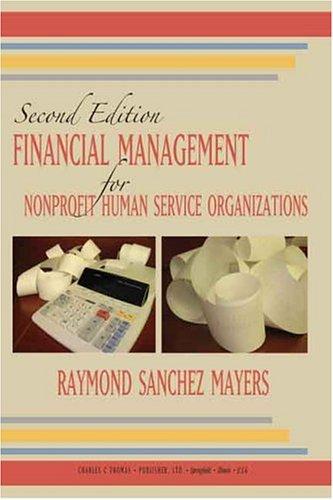Question
Which of the following statements about the RFM analysis above is NOT correct? A: Recency metric may perform better to predict responsive customers than Frequency

Which of the following statements about the RFM analysis above is NOT correct?
A: Recency metric may perform better to predict responsive customers than Frequency and Monetary value metrics.
B:The average response rate is 2.02%.
C:The response rate of recency-based quintile 1 (4.50%) is much greater than the average re- response rate, implying that company X would be able to reduce the costs incurred for having a successful number of responses in the campaign if it chose the customers only from the quintile (recency-based quintile 1).
D:This result shows a failure of predicting profitable customers through the RFM metrics because the response rate does not dramatically vary from monetary value-based quintile 1 to 5.
Company X has a customer base of 400,000 customers. From this customer base, the company randomly picked 40,000 customers as a sample and sent a mailer campaign of a $150 discount coupon to the sample. During the campaign, 808 customers responded - i.e., made a purchase using the coupon. A senior marketing manager of the company conducted the RFM analysis with this sample of customers. She first sorted the sample customers in descending order based on the criterion of most recent purchase date (denoted recency-based), the number of purchases per month in the past (denoted frequency-based), and the dollar amount of purchases per month in the past (denoted monetary value- based). She then divided the customers into five groups (denoted quintiles 1 through 5) of equal size and calculated the response rate of each of the recency-based, frequency-based, and monetary value-based sorted quintiles. The result is as follows: Quintile 1 Quintile 2 Quintile 3 Quintile 4 Quintile 5 Recency- based: 4.50% 2.80% 1.50% 1.05% 0.25% Frequency- based: 2.45% 2.22% 2.08% 1.67% 1.68% Monetary value-based: 2.35% 2.05% 1.96% 1.90% 1.84% Company X has a customer base of 400,000 customers. From this customer base, the company randomly picked 40,000 customers as a sample and sent a mailer campaign of a $150 discount coupon to the sample. During the campaign, 808 customers responded - i.e., made a purchase using the coupon. A senior marketing manager of the company conducted the RFM analysis with this sample of customers. She first sorted the sample customers in descending order based on the criterion of most recent purchase date (denoted recency-based), the number of purchases per month in the past (denoted frequency-based), and the dollar amount of purchases per month in the past (denoted monetary value- based). She then divided the customers into five groups (denoted quintiles 1 through 5) of equal size and calculated the response rate of each of the recency-based, frequency-based, and monetary value-based sorted quintiles. The result is as follows: Quintile 1 Quintile 2 Quintile 3 Quintile 4 Quintile 5 Recency- based: 4.50% 2.80% 1.50% 1.05% 0.25% Frequency- based: 2.45% 2.22% 2.08% 1.67% 1.68% Monetary value-based: 2.35% 2.05% 1.96% 1.90% 1.84%Step by Step Solution
There are 3 Steps involved in it
Step: 1

Get Instant Access to Expert-Tailored Solutions
See step-by-step solutions with expert insights and AI powered tools for academic success
Step: 2

Step: 3

Ace Your Homework with AI
Get the answers you need in no time with our AI-driven, step-by-step assistance
Get Started


